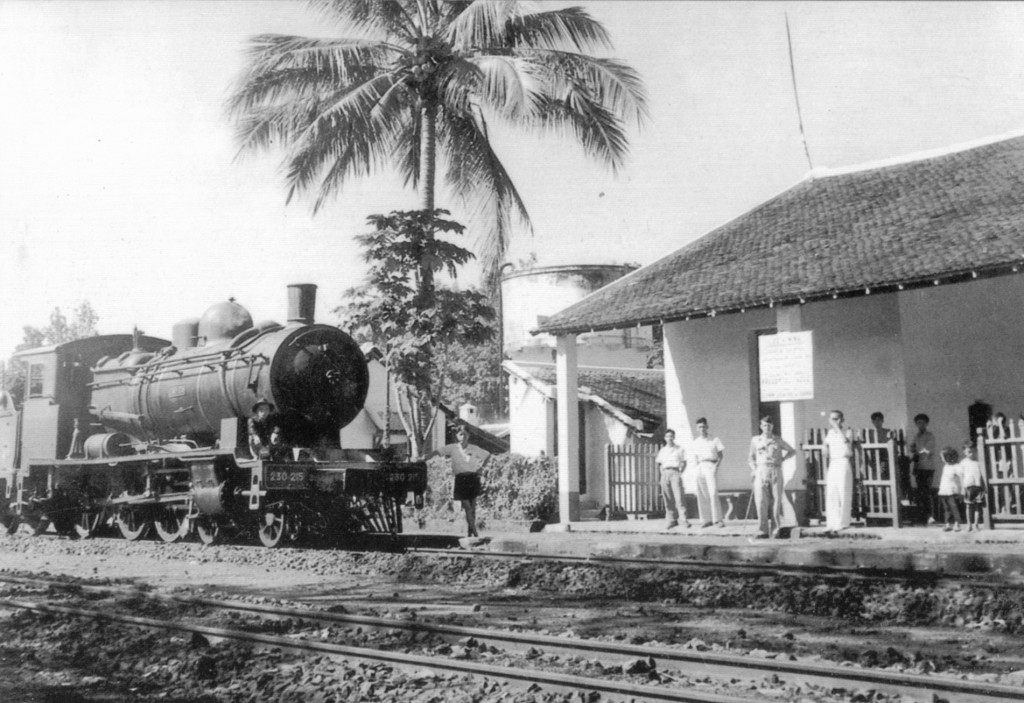
J F Cail 4-6-0 “Ten Wheel” No 230-215 pictured at Lộc Ninh Station in the early 1940s.
Many people have heard of the former Mỹ Tho railway line, but relatively few are aware that a second branch line once ran out of Saigon. This so-called “rubber line” was opened in 1933 to convey bales of rubber and treated latex from the plantations of Thủ Dầu Một province to Saigon port.
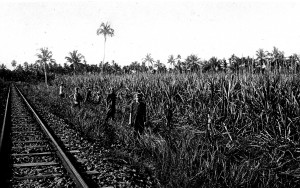
The tramway line north of Thủ Dầu Một
In early 1927, the planters of Thủ Dầu Một province proposed the construction of a new railway line to transport bales of rubber and treated latex from Lộc Ninh and Hơn Quản to the river port of Bến Cát, where it would be transferred by boat to Saigon docks for export. The colonial administration gave the scheme its full support, believing that this new “line of colonisation” might one day form part of a second, inland North-South rail route, linked to the Tân Ấp-Thakhek line (see my earlier post The Railway Which Became an Aerial Tramway), which at that time was already under construction in the north.
The planters set up the Compagnie des voies ferrées de Lộc Ninh et du centre Indochinois (CVFLNCI) to build the line, but later that year the Sài Gòn tramway operator, the Compagnie française des tramways de l’Indochine (CFTI), put forward its own rival plans to link its tramway network with Lộc Ninh and Bù Đốp on the Cambodian border.
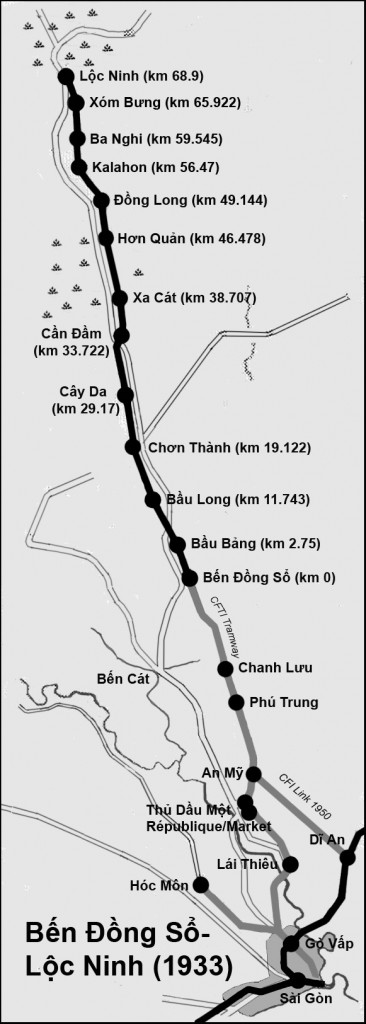
The Bến Đồng Sổ-Lộc Ninh line and its connection to Saigon via the CFTI tramway network
By throwing its hat into the ring, CFTI was able to negotiate a lucrative compromise settlement with CVFLNCI. Instead of linking its new line to Sài Gòn by river at Bến Cát, the CVFLNCI agreed to reroute it to Bến Đồng Sổ, while the CFTI undertook to extend its tramway network northward from Thủ Dầu Một to Bến Đồng Sổ to connect with it. In this way, the new branch line became wholly dependent upon the tramway network to connect it (at Gò Vấp) with the main North-South line run by Chemins de fer de l’Indochine (CFI).
This, of course, left CVFLNCI in a very weak bargaining position. When the Lộc Ninh line opened in 1933, the company was obliged to pay CFTI a substantial access fee equivalent to 50 percent of receipts from all CVFLNCI freight services using CFTI tramway lines, and also to grant CFTI the concession to run all passenger services between Sài Gòn and Lộc Ninh on CVFLNCI’s behalf.
To work the line, the CVFLNCI acquired three 2-8-0 “Consolidation” locomotives (numbered 300-302) built in 1930–1931 by Borsig of Berlin. However, when it was discovered that at 90 tons they were too heavy for the CFTI tramway lines south of Thủ Dầu Một, lighter locomotives had to be shipped in from the réseaux non concédés to haul freight trains onwards from Bến Đồng Sổ to Sài Gòn docks. A repairs and maintenance depot was built at Lộc Ninh.
The completion of the line coincided with the opening of several new plantations, and the encouraging passenger numbers of 1935 (80,905) and 1936 (109,557) reflected the subsequent influx of workers recruited by the rubber companies during that period. However, for most of those workers it was a one-way trip, and in subsequent years this sparsely populated region saw few train passengers other than French plantation personnel.
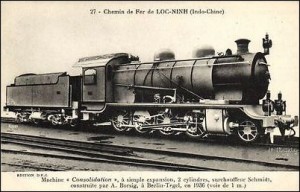
One of the three Borsig 2-8-0 “Consolidation” locomotives (numbered 300-302) purchased by CVFLNCI to work the line
In contrast, the amount of rubber transported on the line rose dramatically from 25,459 tons in 1935 to 42,337 tons in 1936. However, during the three years it ran the line, its disadvantageous line access agreement with CFTI left the CVFLNCI continuously in the red. In 1936 the colonial authorities ran out of patience and terminated the CVFLNCI franchise, placing the line under the direct control of CFI. The line access agreement with CFTI was immediately renegotiated in favour of CFI, but with no funds then available to link the branch directly with the rest of the CFI network, the tramway operator continued to run passenger services from Sài Gòn to Lộc Ninh via Thủ Dầu Một until 1948.
After the CFI took over the running of the branch in 1936, the 2-8-0 Borsig “Consolidations” were transferred to other parts of the CFI network and lighter locomotives were deployed on the line, obviating the need for time-consuming locomotive changes at Bến Đồng Sổ. By the 1940s, daily CFTI passenger services on this line were being handled by Corpet Louvet & Compagnie 2-6-0T locomotives reportedly acquired from the Ardennes, while freight services were hauled by J F Cail 4-6-0 “Ten wheels” and Franco-Belge 2-6-2 “Prairies.”
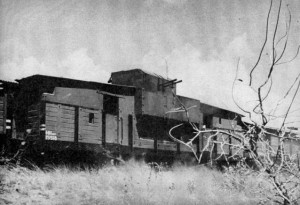
A French armoured train of the type deployed on the line
As the First Indochina War got under way in earnest, Việt Minh attacks on the tramway line north of Gò Vấp increased, “making it impossible for CFTI to continue running trains or repairing the damage” and leading to the closure of the tramway line for security reasons. However, at this time Cochinchina was still exporting well over 60,000 tons of rubber each year and the need to ensure its continued conveyance to the docks overrode all other considerations.
The French authorities therefore responded by taking over the Gò Vấp-Bến Đồng Sổ tramway line, placing it under CFI control and building armoured trains to guarantee the safe passage of rubber from the plantations to Saigon docks.
This situation continued until 6 November 1949, when Việt Minh guerillas blew up the Lái Thiêu bridge, severing the tramway link completely. Realising that even if they repaired the bridge it would always be vulnerable to attack, the French authorities voted special funds to build a new 5.5km railway line connecting An Mỹ (north of Thủ Dầu Một) directly with Dĩ An on the North-South line. This opened on 7 August 1950, restoring the vital freight connection between Lộc Ninh and Sài Gòn docks.
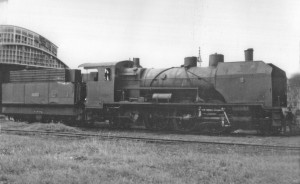
Société Franco-Belge 2-6-2 “Prairie” locomotives were commonly used on the line in the late 1950s. No 131-112 is pictured here at Sài Gòn’s Chi Hoa Depot.
The Dĩ An–Lộc Ninh line suffered considerable damage during the period 1950-1953, but was repaired and reopened in 1954. However, by this time rubber production had been seriously retarded by warfare and in the interim those plantations which remained open had entrusted much of their rubber freight to the road haulage sector.
With its income diminishing year on year, the Dĩ An–Lộc Ninh line was pointedly excluded from the HXVN’s Railway Reconstruction Program of 1957–1959. Denied military protection, the line subsequently became a prime target for sabotage by National Liberation Front (NLF) operatives.
In 1961, train services to and from Lộc Ninh were “provisionally suspended” by the HXVN, bringing to an end all passenger services on the branch. Thereafter, the southernmost section from Dĩ An to Thủ Dầu Một remained in intermittent use by freight traffic until the late 1960s, when the line was definitively abandoned.
Tim Doling is the author of The Railways and Tramways of Việt Nam (White Lotus Press, Bangkok, 2012) and also gives talks on Việt Nam railway history to visiting groups.
A full index of all Tim’s blog articles since November 2013 is now available here.
Join the Facebook group Rail Thing – Railways and Tramways of Việt Nam for more information about Việt Nam’s railway and tramway history and all the latest news from Vietnam Railways.
You may also be interested in these articles on the railways and tramways of Việt Nam, Cambodia and Laos:
The Saigon-Mỹ Tho Railway line
The changing faces of Saigon railway station
The Việt Nam Railways Building in Saigon
Saigon tramway network
Derailing Saigon’s 1966 monorail dream
Đồng Nai Forestry Tramway
The Langbian Cog Railway
A relic of the steam railway age in Đà Nẵng
By Tram to Hội An
The railway which became an aerial tramway
The lost railway works of Trường Thi
The Long Biên Bridge – “a misshapen but essential component of Hà Nội’s heritage”
Hà Nội tramway network
Phủ Ninh Giang-Cẩm Giàng tramway
Goodbye to Steam at Thái Nguyên Steel Works
Full steam ahead on Cambodia’s Toll Royal Railway
The mysterious Khon island portage railway


Ben Dong Xo – Loc Ninh line was opened on 1/12/1933 not 1933 as you stated above (see Procès Verbaux du Conseil Colonial, Session ordinaire de 1933, Cinquième Séance du 11 Octobre 1933, page 190, Tome I; S.I.L.I. (C. Ardin), Saigon, 1934).
Sorry, 1/12/1932 due to typing error.
In my book I quote these references which suggest that it was continuously delayed by construction errors and did not actually open to traffic until August 1933: Gouvernement général de l’Indo-Chine, Rapports au Grand conseil des intérêts économiques et financiers et au Conseil du gouvernement (Hanoï: Imprimerie d’Extrême-Orient, 1930), pp. 657–658; 1932, p.750; 1934, p. 268.